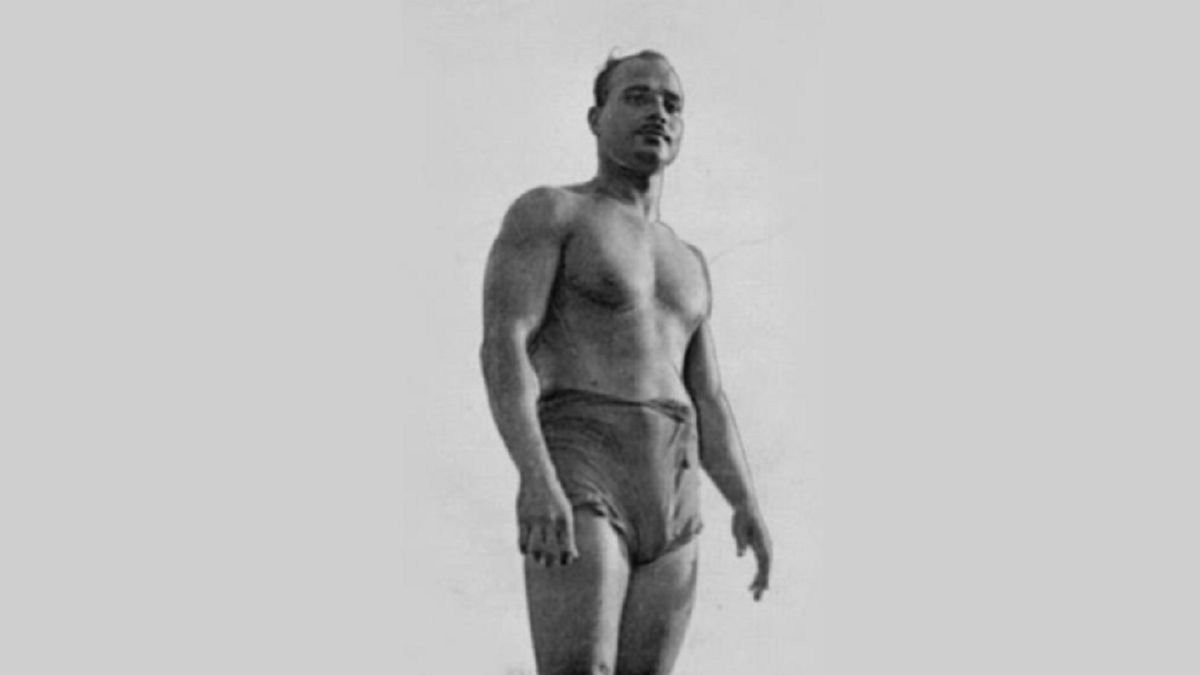


We are grateful to G.C. Das, an international journalist and water polo player from the National Swimming Association, West Bengal, for sharing his memories of the late Sachin Nag whose achievements brought many laurels to India. Das recalls the days of contesting against Sachin Nag in water polo tournaments in the years 1954-56, feeling fortunate for the opportunity.
Sachin Nag, the legendary Indian swimmer, was born on 5 July 1920 at Bengali Taula, Varanasi. He was born to a very poor family and his swimming talent was scouted by Jamini Dass in 1937 in Varanasi. Dass was the captain of the Indian water polo team during the 1948 London Olympics. Nag was taken to Kolkata by Jamini Dass, where Nag not only stayed at his home but also enjoyed his meals with him.
Jamini Dass started nurturing this excellent talent who was not only intelligent but also a good swimmer and an excellent water polo player. Dass then took Nag to the Hatkhola Club in 1938 from where he started his swimming career. It was also where Bijiten Bose was training Indian national swimming champions like Santosh Bhattacharya, Gour Mukherjee, Arati Saha (who was the first female Indian swimmer to cross the English Channel and the first sportswoman to receive the Padma Shri) and her sister Bharti Saha.
Sachin Nag was the champion in 100 meters freestyle for eight straight years in the Bengal State Swimming Championship, thrice at the All India Swimming Championship, and was the first Asian Champion. In 1942, Nag had also emerged as a champion in 100 meters freestyle by defeating the then champion, the late Dilip Mitra, another legendary Indian swimmer who had clocked at 1 minute 04 seconds. Nag’s timing had been 1 minute 02.50 seconds. This record stood in his name for 31 years in swimming history. An interesting fact to note about the record is that in the 1936 Berlin Olympics, Johnny Weissmuller had shocked the sports world by winning five gold medals and a bronze medal in water polo by clocking in at 59 seconds in the 100 meters freestyle. Imagine Johnny Weissmuller had clocked at this time with all the latest scientific equipment and training, whereas Sachin Nag had clocked at 1 minute 02 seconds (or 62 seconds) without any such facilities! Hereby, it must be mentioned that if Nag had practised with the same set of equipment and training as Johnny Weissmuller, then he would have possibly won a gold medal at the Olympics for India.
In 1951, the first Asian Games were held in New Delhi and the swimming events were conducted at the then National Stadium Swimming Pool near the Delhi High Court. On 7 March 1951, at 2 pm, Sachin Nag stood first and won the gold medal for India in the 100 metres freestyle event. Interestingly, this medal was the very first gold medal for India in swimming to date, and at the same time, it was also the first medal won at the Asian Games! The event was witnessed by the then Prime Minister of India, Jawaharlal Nehru, along with her daughter, Indira Gandhi, Lady Mountbatten and Ramanath Ghosh, who was the General Secretary of the Swimming Federation of India. They had all cheered for Nag with the slogan “Cheer up, Sachin Nag, cheer up!” After the win, the PM had gone straight to Nag and given him a shoulder hug.
In this golden race, Nag came first, with a time of 1 minute 04.7 seconds.
G.C. Das also remembers Nag’s words on how he felt when PM Nehru had hugged him. Nag said, “You cannot imagine how much I had enjoyed it.” Later, once when he was asked what the most memorable day of his life had been, Nag had said, “When PM Nehru rushed towards me without caring about protocol and gave me a shoulder hug and his most beloved red rose from his Jawahar coat!”
Other than that, Nag was also a great water polo player who had represented India in the 1948 London Olympics and 1952 at Helsinki. He was an excellent water polo player, and in the year 1951, had won the Bengal State Water Polo Championship, representing Hatkhola Club and defeating the National Swimming Club by 10-3. Nag alone had scored 8 goals, while Jamini Dass and Mohit De had scored one each! At the London Olympics in 1948, Nag scored 4 goals out of, defeating Chile by 3 goals! At an invitational water polo tournament against the US Forces, he had scored two goals, defeating the US forces 13-4. Then against the British team, he had scored six goals, defeating the Britishers, 15-1, and helping his Hatkhola Club become the League Champion.
At the Siri Fort Games Village built during the 1982 Asian Games in Delhi, a separate residential block has been named after him in his honour.
In 1955, he played his last nationals, held in Kolkata, and participated only in 4x100m freestyle relay, where Bengal stood third, Bombay second and Services first.
The Writer is Licence B holder, DSV Germany Swimming Federation.